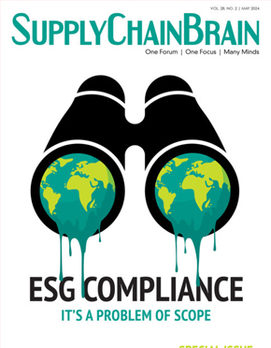
American scholar Warren G. Bennis once said about the future of manufacturing: “The factory of the future will have only two employees, a man and a dog. The man will be there to feed the dog, and the dog will be there to keep the man from touching the equipment.”
Supply chains across the globe need to embrace automation in order to compete effectively and survive. So the question arises: how to evaluate new supply-chain technologies to discover the ones that are right for you? Supply chain is all about managing the flow of information, material and money. Managing these flows involves an abundance of decisions and actions. For example, in any supply chain, a key decision concerns the purchase of raw materials, while actions are then required to move products from one place to another.
Decisions and actions: at first it seems simple, like getting material from Point A to Point B. Yet the exercise can be fairly complex. Which mode should I use? At what cost? And will it arrive in time? One simple decision, but with many options and tradeoffs. It’s effective management of those actions that determines the success of your supply chain.
Let’s break decisions and actions into smaller tasks, sometimes referred to “functional decomposition.” Once we’ve done that, we can apply what I call the “three-step approach” to improving operational performance in the supply chain. The first step is to eliminate unnecessary tasks. The second is to automate tasks to the maximum extent. And the third is to apply process-improvement techniques to the tasks that can’t be automated.
Let’s look at each step in more detail. First, we try to eliminate the task. Supply chains, if not managed effectively, generally have a tendency to accumulate unnecessary tasks in the course of treating symptoms and not the root cause. Perhaps those problem-solving tasks made sense when they were introduced. Over time things change; but now the actions don’t add value to the end customer. Eliminating a task altogether can often do three positive things to your business: it frees up the extra capacity of resources and machines, increases your supply-chain velocity, and eventually allows you to reduce costs.
Several techniques are available in the supply-chain tool kit to identify whether or not a task is necessary for operational improvement. If you’re convinced that a task is necessary, then the second step is to ask whether or not it can be automated. In today’s world, many things done manually are better done digitally. For example, data analysis and other problem-solving tasks can be automated much faster and more accurately with a software application, which can make decisions faster than a human analyst.
Automation also improves the physical movement of products, with robots and autonomous technologies able to perform that function faster and cheaper than humans can. That said, there are still many tasks that are difficult to automate. For those, the third step is to apply process-improvement techniques. There are many “bottlenecks” in a complex supply chain that need to be considered. You need to identify the particular bottleneck and revisit the decisions you’re making, considering tradeoffs among cost, time and quality. As the saying goes, “if you can’t measure it, you can’t improve it.”
The three-step approach described above is a continuous process. A step that seems relevant today might become irrelevant tomorrow. What can’t be automated today might be tomorrow, with the emergence of new technologies.
While current automation activities may result in labor reductions, in many cases they create new jobs as well. For example, warehouse robots replace traditional workers, but create new jobs new jobs for technicians who can install and maintain the robots. In addition, generally speaking, automation makes the remaining workers more productive, and frees up their time for innovation that can generate new types of job opportunities.
In the end, in order to remain competitive, every task has to be completed efficiently and effectively. In order to do that, supply chains need to leverage both people and technology in a balanced way. The 21st century is the century of transformation; we’re living in a world that’s being disrupted by technology on a daily basis, and the supply chain is no exception. Supply-chain professionals must learn to embrace and lead the change. We need to deploy new technologies when and where it makes sense. By staying up to date with the capabilities that new technologies offer, you’re able to identify automation opportunities, stay relevant, and make yourself invaluable as a supply-chain professional.
Pushkar Dixit is engagement manager for supply-chain consulting at Tata Consultancy Services.







